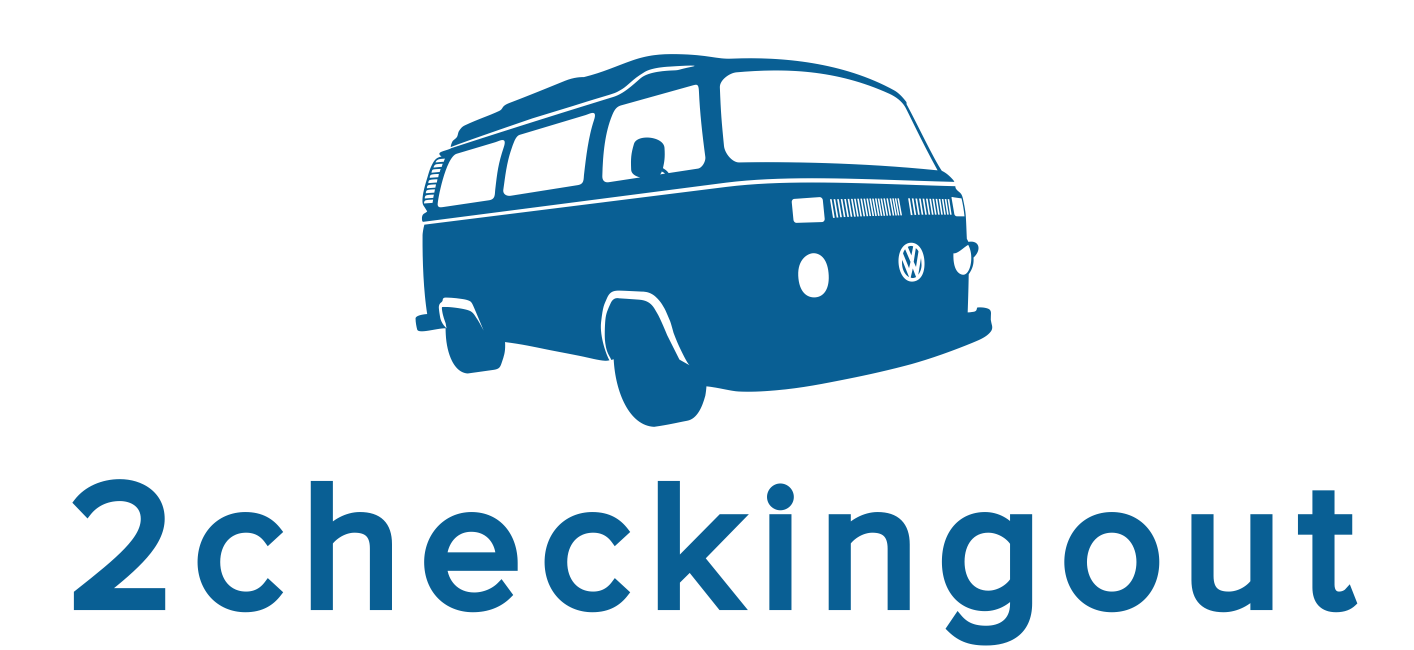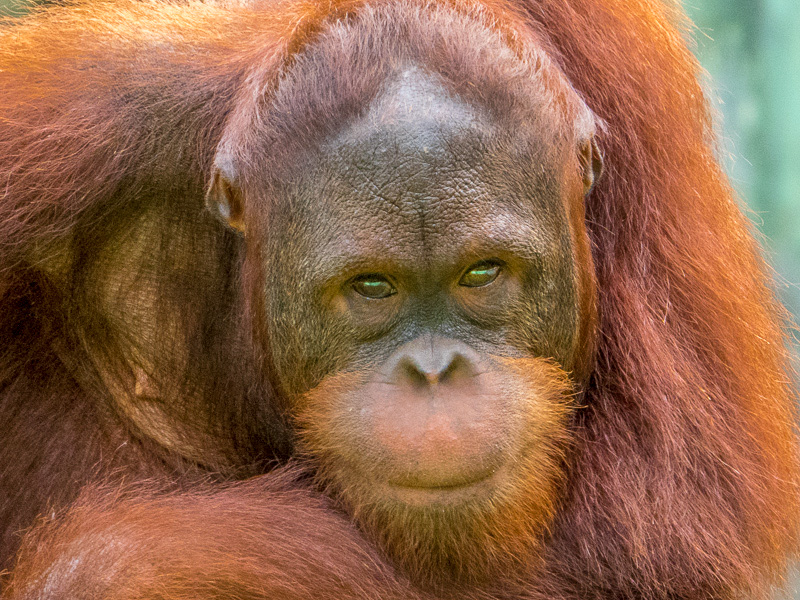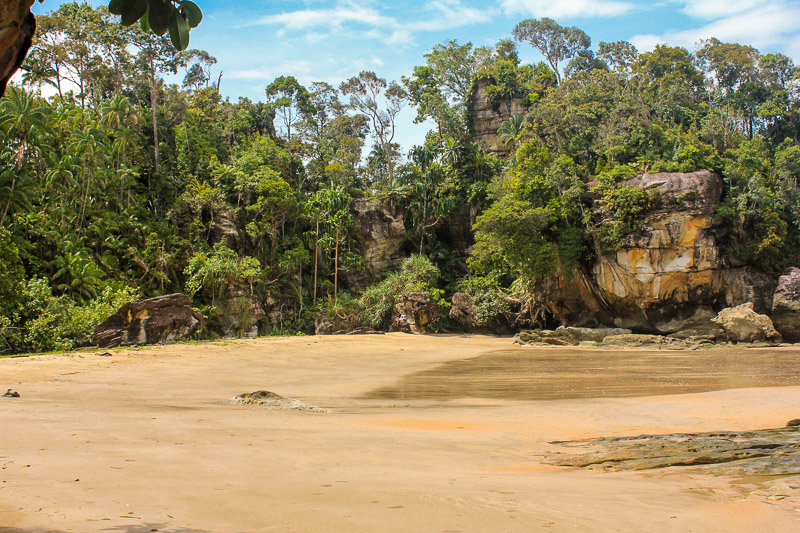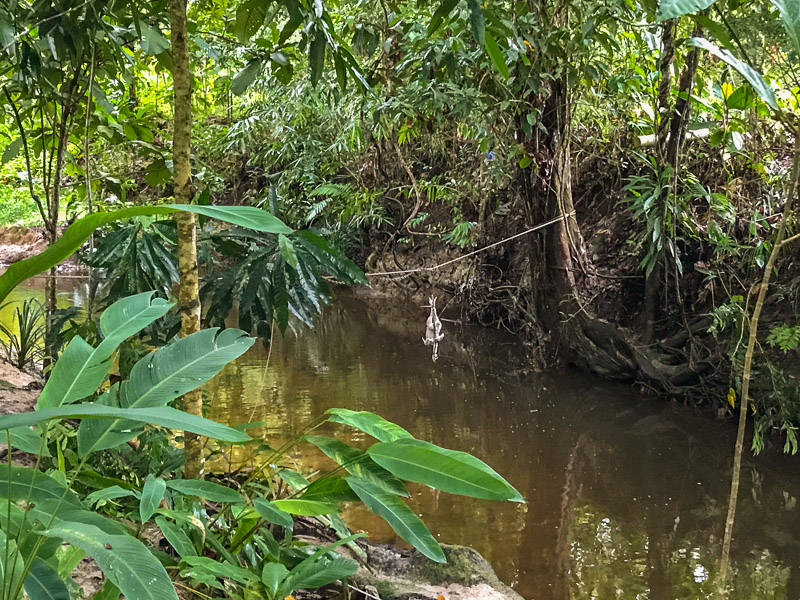Borneo Adventure: Eye to Eye with the Borneo Orangutan
Connecting with the Borneo orangutan at Semenggoh and Matang. Marvelling at other Borneo wildlife in Bako National Park and Kubah National Park. Our best Borneo adventures.
The Borneo rainforest is home to many unique and endangered species including the Borneo pigmy elephant, Bornean rhinoceros, clouded leopard and Hose's palm civet.
For us, the big draw was to see the critically endangered old man of the jungle, otherwise known as the Borneo orangutan.
Our first visit was back in 2011, a fantastic pressie from Julie for a special birthday. Let’s just say it had a five and a zero in it! We had such a wonderful first visit, that we jumped at an opportunity to return to the largest Island in Asia in June of last year.
Little did we know that this latest trip would include sharing our accommodation with a huge crocodile.
The Kebun
Our accommodation on both trips was The Kebun, just outside Kuching. Set on the edge of the Borneo jungle and with the Sungai Rayu river running along one side. The Kebun, run by Adrian and his family, is an organic farm in the jungle with some unique accommodation options.
Adrian used to be a set designer, and two of his bungalows (Adrian’s & Oliva’s) came from the set of the movie, The Sleeping Dictionary (starring Jessica Alba and Bob Hoskins). He has also built an authentic longhouse that can sleep up to 10 people, and the Huntsman Lodge for families wanting a little more space.
On our first trip back in 2011, we stayed in Adrian’s Bungalow . This riverside accommodation is a very authentic Malay style comfortable bungalow that would have been built during the days of British rule.
Each evening we would make our back after dinner, using our torch to scan for snakes and crocs.
On our first visit, Adrian was our tour guide and driver for the week, excellent personal service.
This time around we got to spend time in Oliva’s Bungalow. Nowadays you are provided with a car and the local highlights are pre-programmed into a GPS as part of your stay. Dinner is delicious homemade fare delivered to your room each evening. No more dodging crocodiles and snakes, or so we thought.
The Kebun is an excellent base from which to explore all the things to do in Kutching.
Matang Wildlife Centre
Established in 1998, Matang Wildlife Centre is a stone’s throw away from The Kebun. Being us, we arrived bright and early. So much so that ranger at the gate still had his sleepy head on.
The primary focus of the centre is the rehabilitation of rescued and confiscated orangutans. Here they are taught how to cope by themselves in the wild. When ready they are transferred to various locations including Semenggoh for release. Unfortunately, not all the babies take to independent life in the jungle, and some spend much of their life at the centre.
The centre is also home to rescued monkeys, hornbills, sun bears and civets.
You can volunteer here but you will need a deep wallet, as getting up close with orangutans does not come cheap.
A highlight of our visit was watching a young female orangutan rolling around with a sack over her head. She was having a ball.
Semenggoh Nature Reserve
This is the reason why you visit Borneo, to get to see the old man (and woman) of the jungle up close.
Semenggoh is home to family groups of orangutans, many of them starting life as orphans. Over the years a number of those orphans have grown up to have their own families. There are now second and third generation orangutans that have been born and grown up in the park.
The dedicated rangers and wardens spend their days training the orangutans to feed and fend for themselves.
In 2011, none of the orangutans came down for the morning feed, and so the large crowd of visitors left disappointed.
Adrian told us to hang tight, and he went off to chat to a park ranger. Next minute we were trekking through a part of the park that was closed off.
This track used to be open to small guided groups, but Hot Mamma (orangutan) had taken exception one day and bitten off a couple of fingers of a ranger. So the path had been closed to the general public. We were now getting a private tour.
We still didn’t see any orangutans but had an enjoyable hour tramping through the steaming hot Borneo jungle. We exited the walk with a few friends. A number of leeches had attached themselves to our boots and socks.
Another time, Hot Mamma came ambling through the visitors areawith a baby clinging to her. We were close enough to reach out and touch her. But I valued my fingers far more than a fleeting stroke of a semi-wild orangutan.
Hot Mamma with her baby
Completely hooked we went back for a third visit in 2011, and on this occasion, a couple of orangutans were being fed by a ranger in the car park.
On our recent visit we had a chance to chat to Dominic, one of the rangers. He had spent the last 15 years working with orangutans at Semenggoh and Matang Wildlife Centre.
I asked him how the palm oil plantations were affecting the habit of the orangutans. While certainly having a huge impact on these beautiful animals, Dominic was also aware of the need of the people of Sarawak to able to earn a living. “We just have to find a way where both the people and the orangutans can thrive.” A very diplomatic answer.
That balance has yet to be struck. As you fly into Kuching the rich rainforest has been decimated in the name of palm oil. What was once a rich landscape of dense forest, is now palm oil plantations as far as the eye can see. There is little wonder that these gorgeous animals are struggling to survive.
Puckering up
Kubah National Park
Long Lost Twin Brother
Tucked along the edge of the Matang Range, Kubah National Park is just a short drive away from The Kebun. At the entrance, we came across my long lost twin brother. Turns out my twin is hilarious and helpful. Full of tips on the best trails and gently reminding us to drink lots of water.
We chose the waterfall walk which is a 3-hour hike and started with a 20-minute slog uphill on tarmac before turning off into the jungle. Then it becomes a mixture of trails and wooden walkways crossing swampy areas.
The waterfalls are probably much more impressive during the rainy season. Still, it was worth the slog. The slippery rocks around the base of the waterfall made getting close an extreme sport with more than one person falling on their butt.
Heading back, we came across an unusual group heading to the falls. A photoshoot team of four guys were carrying tripods and other equipment, while a woman struggled along in a full-on wedding dress and flip flops. Go figure.
Bako National Park
One of the gems in the Kuching area and the oldest National Park in Sarawak. Approx 50 minutes from The Kebun is the pier where the shuttle boats for Bako depart. The 25-minute boat ride to the park costs RM40 for a return ticket.
On our first visit here we encountered several bearded pig piglets, the rare proboscis monkeys (only found in Borneo) and several macaques, including a group playing in a pool of water left by the outgoing tide
We tackled a short hike that almost killed us, such was the level of fitness back in 2011.
This time around we opted for a longer hike, over three and half hours, across various terrains and ecosystems, including slippery rocks, mangrove forest, and a maze of tree roots.
There are 18 different trails to choose from. To keep an eye on visitors you have to sign in and sign out when you start and finish each walk. A number of the walks take you to deserted coves, where the warm waters of the Java Sea lap gently onto the beach.
The wildlife was pretty quiet on the trail, that’s because it was all down near the visitor centre. Within just a couple hundred metres of stepping off the boat, we came across silver leaf langur monkeys, proboscis monkeys, bearded pigs, and ring-tailed lemur with a baby up a tree.
Sarawak Cultural Village
These places are not normally our cup of tea. Given that they are clinical potted examples of rural life. But on our first trip to Borneo, we had an enjoyable few hours at the Sarawak Cultural Village with Adrian as our host
We wandered through the many different types of traditional longhouses from the various ethnic groups. Some of the houses have examples of local crafts and foods.
There’s also a 45-minute cultural display, with performances of songs and dances. Adrian helped make our visit an enjoyable experience. It was very quiet the day we visited and apart from the odd local school group it felt like we had the place to ourselves.
We did get a slice of real longhouse village life with a visit to Annah Rais Longhouse. Sometimes felt like voyeur taking a peep at everyday life for these villagers. Be warned there are the occasional organised group of loud tourists who barge through snapping photos of anything that moves. Be patient they’ll be gone in a matter of minutes.
More Quick Highlights
Chingsan Yan Temple, great views out to Bako National Park and the Sarawak River.
Rambungan Beach & Jetty, beautiful long beach just a few minutes drive and small car ferry crossing from The Kebun.
Virgin Coconut Shake, yummy shakes after a busy day sightseeing.
Sri Maha Mariamman Temple, built for the workers on the rubber plantations, pleasant walk and views across Kuching. Warning there may be a guy hovering by your car when you return asking for money for ‘taking care of your vehicle’.
Kampung Telaga Air, small fish market with one or two restaurants.
Crocodile Encounter
During our recent visit, Adrian moved his chickens and ducks from down by the river to up close to the house one day.
Now in his years running The Kebun, Adrian seen just about all the dangerous and exotic wildlife that Borneo can throw up. Including a snake that gave him rope burns when he lassoed it.
So when he stepped out of the main house early evening, during a heavy thunderstorm, to see what the dogs were barking at, a stream of expletives poured out of his mouth. He came within feet of a hungry 4.5 metre (15 foot) crocodile who was pissed that Adrian had moved his food supply.
The crocodile had swam up the small stream that runs through the grounds, padded up the drive passed Oliva's Bungalow in the search for an evening snack.
The next morning we woke to a dead chicken suspended on a chain and hook across the stream. Pulling up our seats on the back veranda and with camera at the ready, we waited for the action to start. Unfortunately (or fortunately) Mr Crocodile was already fat and full and didn't take the bait during our visit.
One very unhappy chicken
Adrian did tell us that the crocodile had made an appearance several days later. Firing his shotgun, the pellets just bounced off the thick skinned croc like jelly beans.
The last night of our stay at The Kebun, Adrian asked if we would be interested in housesitting! I don’t think we have the necessary skills and experience for jungle housesit, just yet. But boy what an experience it would be.
The Kebun is a magical place; if you are looking for a little taste of jungle life in Borneo, then this is the place for you. You can hang out and relax, wander the ever-changing jungle gardens. It’s also a perfect spot from which to explore the surrounding area.
Adrian is a fantastic host, a mine of helpful hints and tips on what to see and do. And of course he has many a riveting tale of wildlife encounters in this corner of Borneo.
The heart and soul of borneo
Of all the many attractions in and around Kuching, we could have spent hour after hour at Semenggoh, being in the presence of the orangutans. We felt a deep connection looking eye to eye with the orangutans as we shared their space.
If for no other reason a trip to Borneo is worth every penny/cent for a chance to get see the Richie, Hot Mamma, Salina and her baby, and the rest of the orangutans of Semenggoh in the semi wild.
The work that Dominic and the team do day in and day out is priceless. Many people have dedicated their lives to the plight of the orangutan. It is something we can all help with, even from thousands of miles away.
For us, we will strive to buy only non palm oil products or at least sustainably produced products. Every person who does this will help preserve the precious habitat that these beautiful animals need for their very survival.
Footnote. There was a recent report covering the plight of the endangered orangutans. Here’s a link to the BBC’s coverage of the report.
































